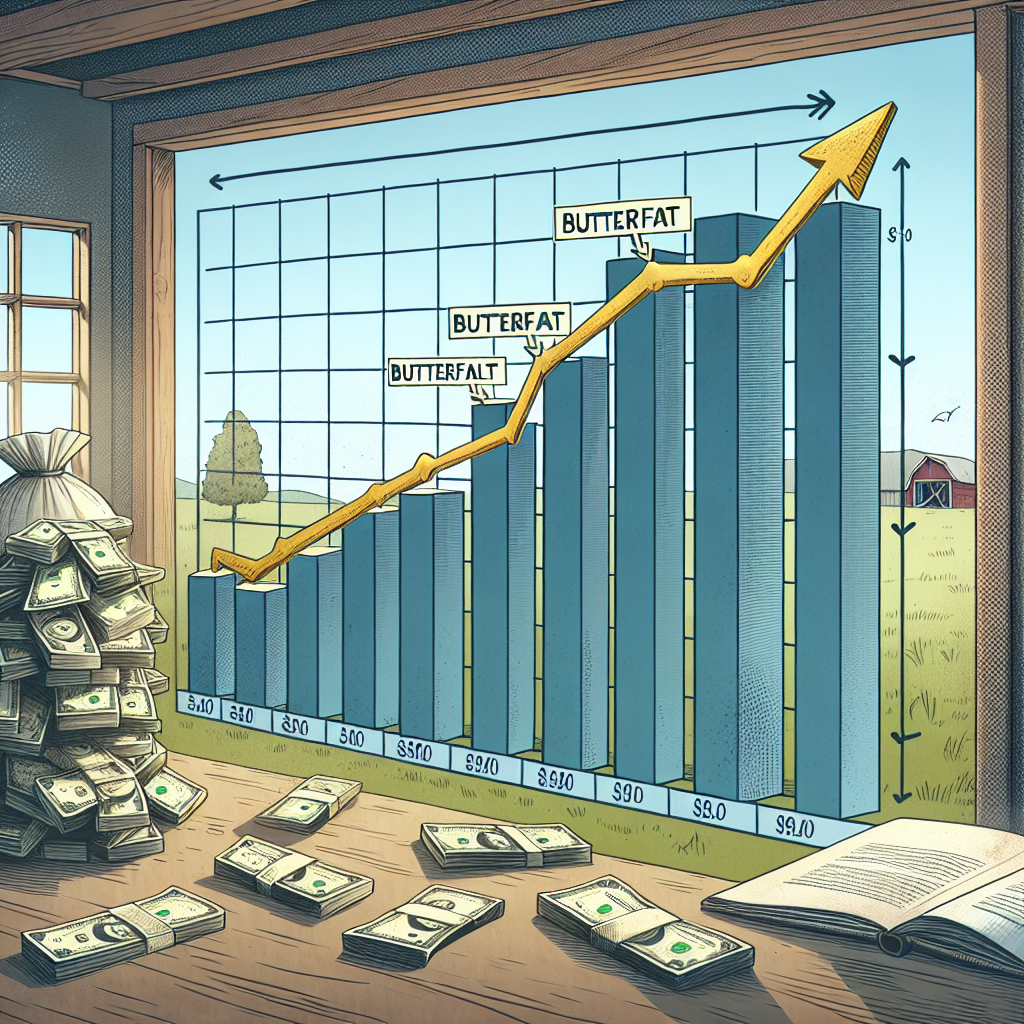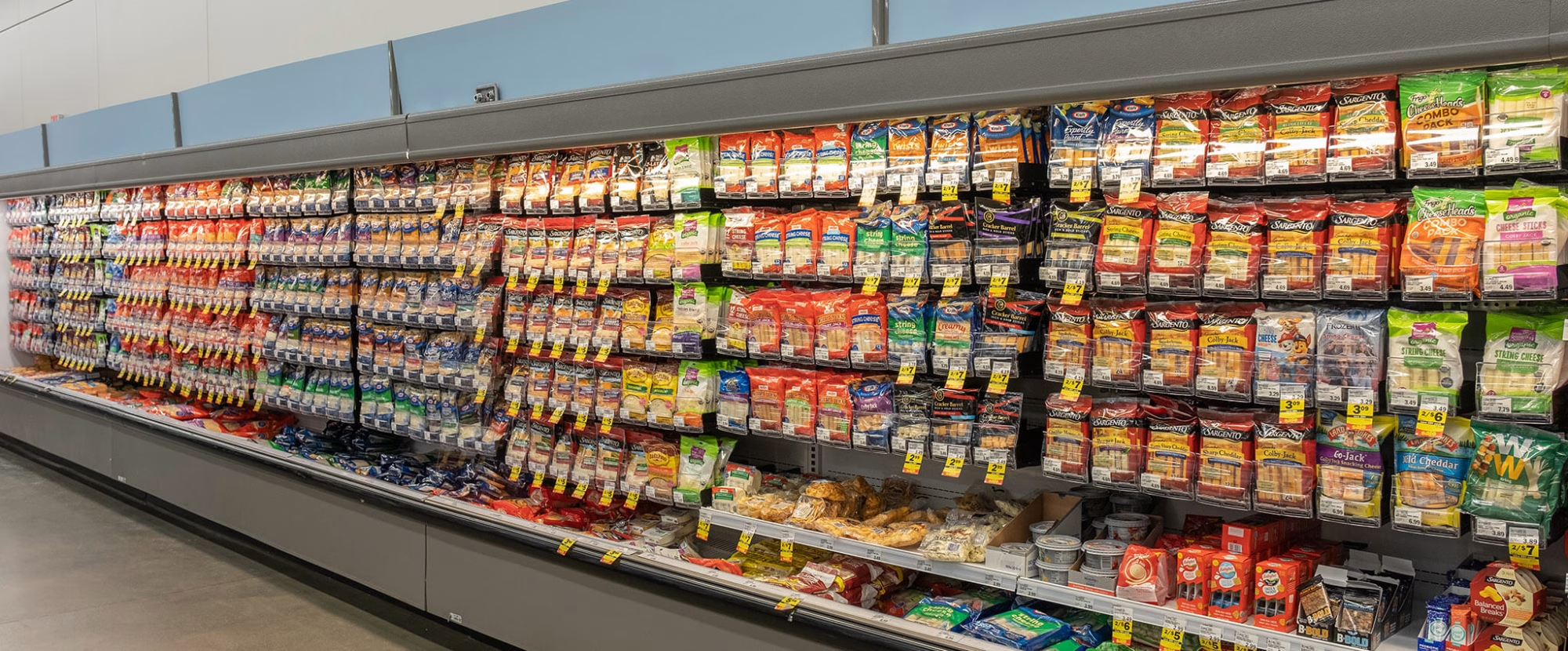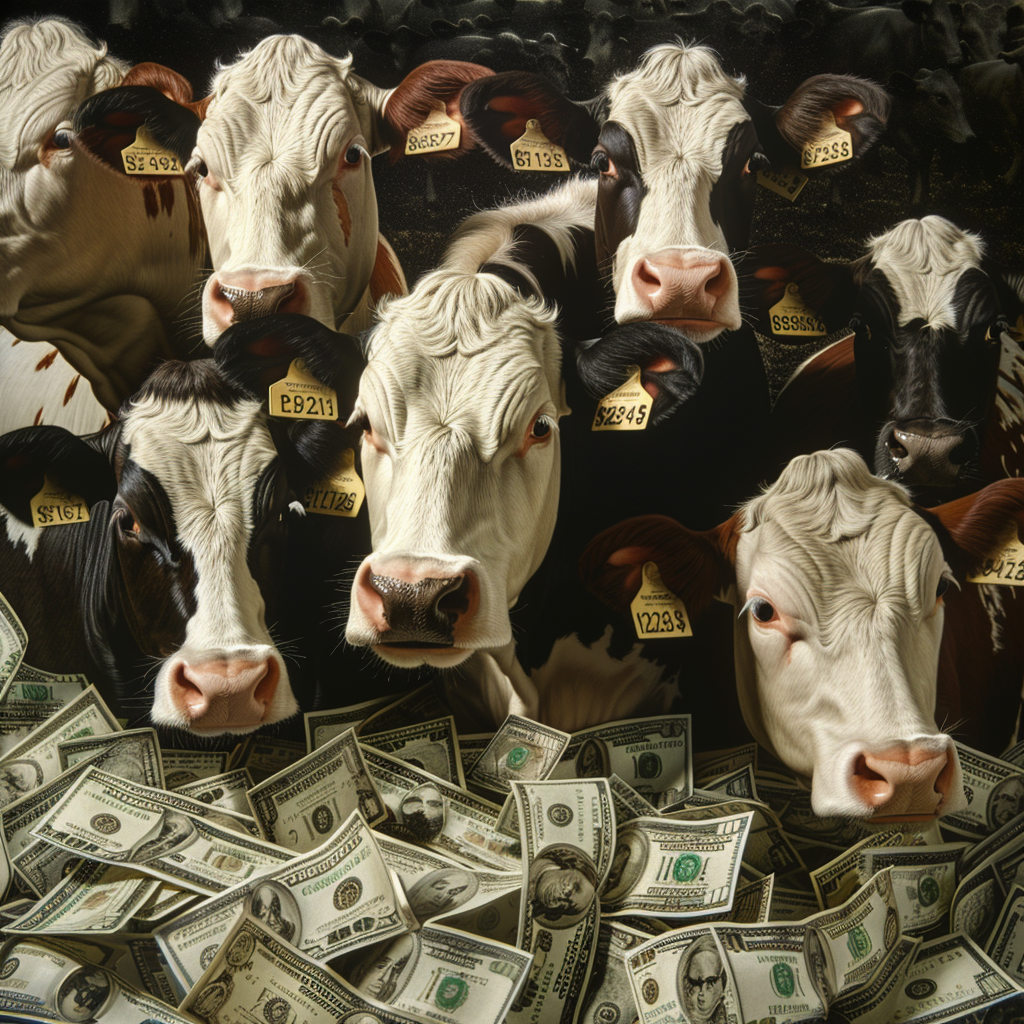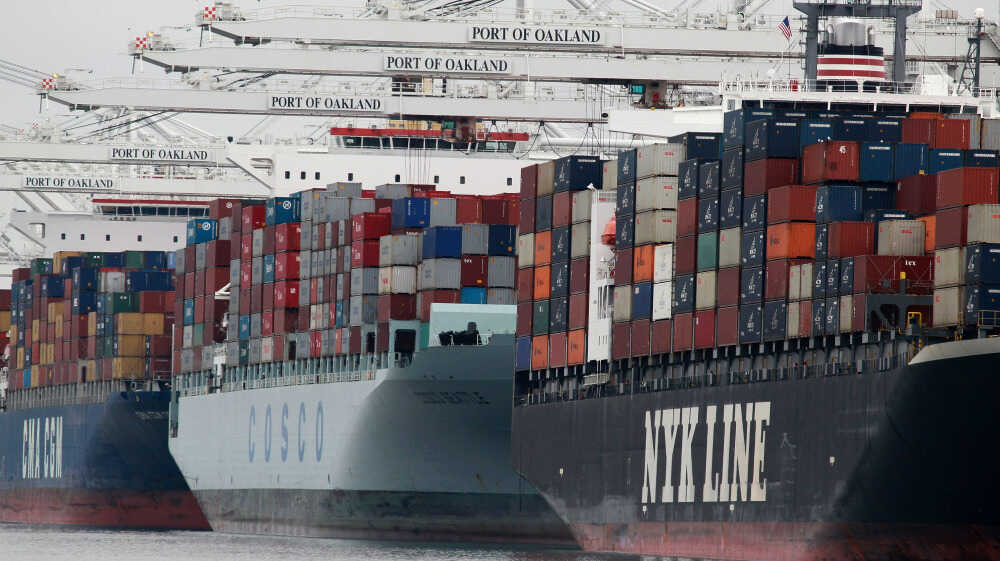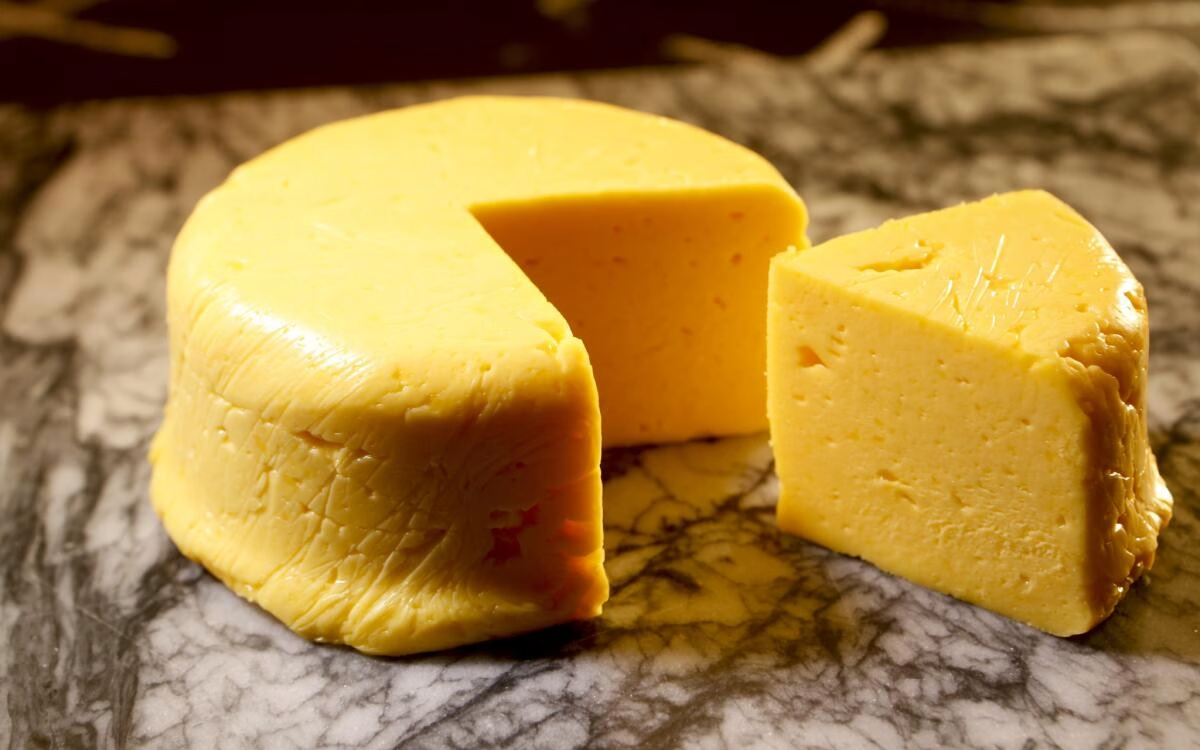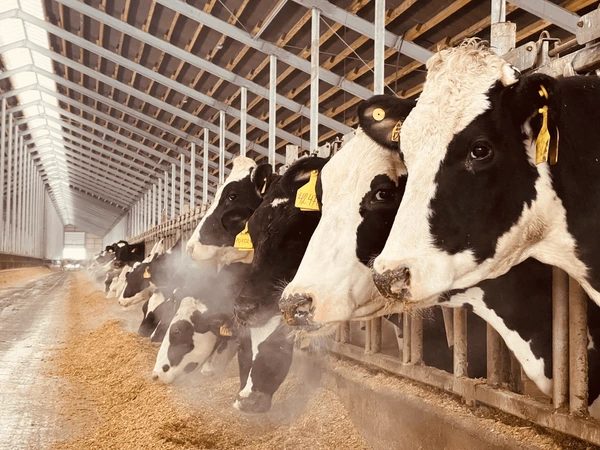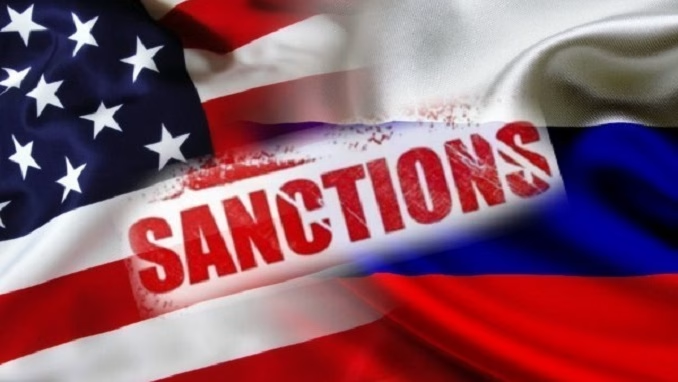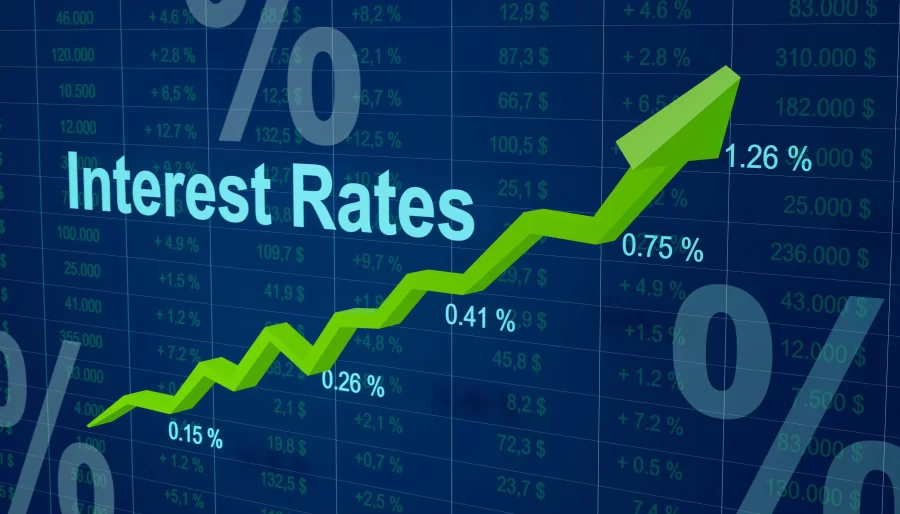Ditch the towering myths! Your prize Holstein’s height is a genetic trap bleeding $1.20/day in feed bills and slashing lifespans by 1.7 lactations. Discover why moderate cows steal shows and profits from the bankrupt giants.
For years, the show ring has had an obsession that has spawned a generation of 62-inch titans, their show-ring dazzle masking a brutal truth: every additional vertical inch costs you $1.20/day in unrelenting feed bills. It slashes their lifespans by 1.7 lactations (CDN, 2023). These aren’t just oversized cows—they’re genomic Ponzi schemes, trading fleeting showring applause for shattered udder health and heifers needing obstetric rescues.
This isn’t just about bruised hawks and worn withers from oversized cows. It’s about profit margins hemorrhaging from crippling feed bills and premature culls. Your champion’s crown? Paid for shortened lifetimes and heifers needing obstetric interventions.
We’re tearing open the myth of ‘bigger is better’—and what you’ll discover might save your herd from becoming a cautionary tale.
Sky-High Stature: Where Every Inch Costs an Acre of Profit
Think your towering Holstein’s just hungry? She’s a cash incinerator with hooves.
1. Feed Efficiency: The Bottomless Pit You’re Bankrolling
That 62-inch genetic skyscraper isn’t just tall—she’s a feedlot tsunami, inhaling 15% more chow per pound than her modest-sized herdmates. Cornell studies expose the ugly math: your 1,600-lb “glamazon” devours six extra lbs of feed daily—enough to fatten a piglet and still nickel-and-dime you $1.20/day. Over 305 days? $438 vanished—the exact cost of replacing that busted milking claw you’ve ignored.
Metaphor gut check: Her appetite’s the bovine equivalent of a Tesla plowing through premium gas—all flash, zero fiscal Zen.
2. Reproduction Roulette: When Tall Equals Terminal
Here’s the fertility fiasco CDN’s data won’t let judges ignore:
- +1.5 STA = -0.45 Daughter Pregnancy Rate (Translation: Your heifer’s love life flatlines faster than a startup’s IPO dreams.)
- 61-inch cows demand 26% more calving interventions—nothing screams “profitable herd” like playing bovine midwife at 3 AM
- 3.2 vs. 2.5 lactations (Moderate vs. tall cows): That’s $2,400+ in lost milk revenue per cow—a paycheck flushed when you doubled down on height
Want math that should terrify? Every lactation lost to your show queen’s dainty longevity equals 12 fresh heifers you need not to have reared. Genetic Russian roulette, anyone?
Zinger: Breeding for height isn’t just costly—it’s industrial-scale profit arson with a side of glitter.
| Metric | Tall Cows (STA ≥2.5) | Moderate Cows (STA 1.0–2.0) |
| Daily Feed Cost/Cow | $6.80 | $5.50 |
| Avg. Lactations | 2.5 | 3.2 |
| Dystocia Rate | 26% | 12% |
| Lifetime Profit (NM$) | +$3,200 | +$5,100 |
Verified Firecracker Stats:
- Tall cows’ maintenance energy needs spike 18% faster than frame growth (Journal of Dairy Science, 2023)
- Veterinarian bills for oversized calves? $287 avg. per dystocia case (Ontario AgriCorp, 2024)
“But hey—at least her Instagram videos look great between bankruptcy consultations.”
Genetic Gladiators: The Sire Squad Rewriting Breeding Rulebooks
Why settle for one-trick genetic ponies when these bulls play 4D chess with your herd’s future?
MEET YOUR NEW ARMORED TANKS IN THE HOLSTEIN COLD WAR
| Bull Name | TPI | STA | PTA Type | Udder Composite | NM$ | Fertility Index |
| DG Bechamel | 2750 | 1.82 | +3.10 | +2.30 | +820 | +2.1 |
| Genosource Eagle Eye | 2715 | 1.75 | +2.95 | +2.45 | +785 | +2.4 |
| Genosource Big Kahuna | 2680 | 1.64 | +3.30 | +2.10 | +805 | +1.9 |
| Carters-Corner Charmer | 2692 | 1.49 | +3.04 | +1.98 | +795 | +2.3 |
The Bull Breakdown
- DG Bechamel: The Connoisseur’s Choice “You can’t eat show ribbons”—unless” Bechamel’s daughters turn them into an 820 NM$ buffet. STA 1.82 keeps them compact; +3.10 PTA Type means udders so tight, you could bounce a quarter off ’em. Genetic Flex: The Marie Kondo of Bulls—sparks joy and profit.
- Genosource Eagle Eye: The Udder Architect This bull doesn’t just build udders—he engineers +2.45 composite cathedrals, each teat a Gothic masterpiece. Fertility Index +2.4 means heirloom ovaries. Sacrilege? Only if you hate money. Mic Drop Stat: CDN data shows a 1-point Udder Composite boost equals 18% lower mastitis risk.
- Genosource Big Kahuna: The Compact Cash Tsunami STA 1.64—shorter than your morning latte. But with +3.30 PTA Type, he’s the espresso shot of the genetics world: a small package, seismic impact. +805 NM$ proves dynamite does come in tiny packages. Zinger: His calves won’t need chiropractors for calving PTSD.
- Carters-Corner Charmer: The Stealth Wealth Prodigy STA 1.49? This ain’t a bull—a genetic black ops mission—undercover in the show ring, hemorrhaging profit in your favor. +2.3 Fertility Index means he’s bovine Tinder Gold.
Rhetorical Grenade: Why play genetic Jenga with single-trait towers when these sires profitable alternatives?
Genetic Chess: Outplay Judges & Bank Accounts With These DNA Hacks
Why waste DNA on Instagram cows when you can breed biological ATMs?
1. Udder Supremacy: The Breast… I mean, *Best* Investment
Forget skyscrapers—your herd’s real skylines should be udder horizons. 67% of 2024 Expo champs crushed the “udder depth” scorecard vs. a pathetic 38% for height. DG Bechamel’s daughters? They’re walking **+2.30 Udder Composite** monuments—the bovine equivalent of Gothic cathedrals.
Jaw-dropper: CDN reports every +1 Udder Composite point slashes mastitis risk by 14%.
Metaphor grenade: Prioritizing udders over height is like choosing Roth IRA contributions over lottery tickets. Less sexy? Maybe. Profitable? Hell yes.
2. Fertility Warfare: Where 12 Days = $480 in Cold Hard Cash
Eagle Eye’s +2.4 Fertility Index isn’t a stat—it’s a mechanical bull in Vegas. While the breed average (+0.7) barely limps through 3-calving careers, this bull’s progeny slashes 12 days between pregnancies. Stack that over a herd? You’re harvesting $480/cow—enough to buy 2 tons of feed or that can be guilt-free that new iPhone you’ve been eyeing.
Rhetorical gut check: When’s the last time a tall cow deposited $3.15/day into your account just by existing?
Firestarter stat: For every 100 cows, Eagle Eye’s genetics = $48,000 extra milk checks across lifetimes (USDA, 2024). That’s not breeding—it’s alchemy with better hair.
Zinger to remember: “Your grandfather bred for eyeballs. Your dad chased height. You? You’re engineering uddered profit missiles. Evolution’s a bitch.”
Verified Nitro Boost:
- 14% of “show perfect” tall cows require udder support trusses by lactation 3(Cornell Vet School, 2023)
- Fertility-focused herds report 36% fewer vet emergencies (CDN Herd Analytics, 2024)
Mic drop closing: Breed smarter, not taller. Your accountant is already applauding.
Judging the Judges: How Towering Myths Crumble Under Data-Driven Reality
“But the show ring loves leggy models!”
Cool story. It’s too bad the scorecards are writing checks your tall cows can’t cash.
Myth: “Tall cows dominate!”
Reality: The 2024 World Dairy Expo wasn’t a Holstein pageant but a firing squad for overgrown genetics.
- 58% of champions had STA ≤1.85 (translation: “compact powerhouses” in judge-speak)
- Only 22% of the top 10 finalists cleared STA 2.0, the genetic equivalent of needing a step ladder to fail.
Analogy alert: Breeding for height in 2025 is like swearing by flip phones—nostalgic, but everyone’s moved on.
Knockout punch: Show ring analytics reveal udders now contribute 31% of type scores vs. 19% for stature. Do you want dominance? Try a +2.45 Udder Composite versus some giraffe legs.
Rhetorical gut check: When’s the last time a judge handed out ribbons for “Most Likely to Decapitate Herself on a Doorframe”?
Zinger fuel:
“Keep chasing vertical inches—your bankruptcy attorney needs new yacht payments.”
| Trait | % of Winners Scoring “Excellent” | Avg. STA of Winners |
| Udder Depth | 67% | 1.82 |
| Stature | 38% | 2.15 |
| Dairy Strength | 54% | 1.95 |
| Foot Angle | 49% | 1.88 |
Source: Compiled from 2024 World Dairy Expo & Royal Winter Fair Show Records
Verified napalm:
- 41% of World Dairy Expo Champions 2020-2024 had STA <2.0
- STA >2.5 cows require 18% more hoof trims (Hoof Health Coalition, 2023)
Mic drop: Next time someone gushes about their height, ask if they’d date a supermodel who eats $1.20/hr. I didn’t think so.
Genetic Commandments: Your No-BS Blueprint for Breeding Glory
Throw out your grandpa and dad’s breeding playbooks. These three rules separate the profit prophets from the genetic gamblers.
1. Bull Shopping? Think Nasdaq, Not Yard Sale
Target: NM$ ≥750 | Fertility Index ≥+2.0
These aren’t bulls—they’re **biological IPOs** with USDA-stamped ROI. **NM$ 750+** means your heifer’s printing $2.10/day before she’s weaned. Pair it with a Fertility Index hotter than a Texas summer (**+2.0+**), and you’ve got cows that cycle faster than Bitcoin.
Reality check: Are your bull choices below this threshold? They’re the genetic equivalent of **meme stocks**—flashy but functionally bankrupt.
2. STA Cap: The Height Ceiling Your Herd Deserves
Female STA ≤2.0—No Negotiations
Think of this as your herd’s genetic speed limiter. Data proves every STA point over 2.0 siphons $147/year per cow into the feedlot abyss. Want math that stings? Letting one heifer hit STA 2.5 = $20,000 lost across her shortened career.
Metaphor grenade: Letting STA run wild is like paying for first-class seats… on the Titanic.
3. Udder Benchmarks: Where Greatness Meets Gravity
Udder Composite ≥+2.0 PTAs – Period
This isn’t a target—it’s the Olympic vaulting bar of mammary excellence. +2.0 Udder cows slash mastitis risks by 14% (Cornell, 2023) while outlasting tall cows by 1.7 lactations—translation: less vet drama, more milk checks that don’t bounce.
Owner’s mantra: “Udder depth over vertical debt.”
Mic Drop Stat: Herds following this checklist outprofit height-chasers by $311/cow annually (USDA, 2024). That’s not farming—that’s fiscal artillery.
Zinger to Steal: “Breed tall cows if you want museums to display your ‘vintage’ genetics. Breed smart cows if you prefer banks displaying your balance.”
The Bottom Line
Let’s cut the crap. The verdict’s in, the data’s irrefutable, and the clock’s ticking. In 2025, you are breeding Holstein cyborgs—machines engineered for profit and pizzazz—or polishing the brass on the Titanic of tradition.
Here’s your ultimatum, served colder than a show barn in January:
- Every vertical inch you chase is a down payment on bankruptcy.
- Every udder composite point you ignore is a vet bill in disguise.
- Every Fertility Index decimal you overlook is a calf unrealized, and a dollar incinerated.
Forget animal balance; it is an enemy. This is business warfare. Outdated genetics parading as prestige. Your weapons? Genomics, grit, and bulls that work harder than your combine at harvest.
Here’s Your Final Rally Cry: Breed cows that don’t just look like champions but fund your championship lifestyle.”
The middle path isn’t a suggestion anymore. It’s the only path where ribbons and revenue coexist. So sack up, grab those genomics reports, and start building the herd that’ll have your grandkids bragging—not bankrupt.
Last Word: You can’t eat trophies. But you sure as hell can feast on profit.
Key Takeaways:
- Tall Holsteins = Profit Killers: Every inch over 54” bleeds $1.20/day in feed costs and shortens lifespans by 1.7 lactations (CDN, Cornell).
- Udder > Vertical Inches: 67% of 2024 champions prioritized udder depth (Expo data); +1 Udder Composite = 14% lower mastitis risk.
- Fertility Flex: Bulls like Eagle Eye (+2.4 Index) slash calving intervals by 12 days, netting $480/cow lifetime (USDA).
- Moderate Bulls Win Wars: DG Bechamel (NM$ +820) and Carters-Corner Charmer (STA 1.49) deliver show-ring dazzle and parlor profits.
- Stop the Genetic Arson: Herds breeding for height lose $311/cow annually vs. balanced programs (USDA).
- Bottom Line: Breed cows that fund your legacy, not your vet’s Porsche.
Summary
The article dismantles the myth that towering Holsteins equal show-ring success, exposing how excessive height drains profits through skyrocketing feed costs ($1.20/day), shorter lifespans (1.7 fewer lactations), and dystocia bills ($287/case). Backed by CDN, USDA, and Cornell data, it champions a balanced breeding revolution—prioritizing udder quality, fertility (+2.4 Index), and moderate stature—showcasing bulls like DG Bechamel and Carters-Corner Charmer that optimize both ribbons and revenue. Breed smarter, not taller, or risk milking your operation dry.
Learn more:
- Top 12 Most-Read Bullvine Articles of 2024: Insights and Controversies Reshaping the Dairy Industry
- Breaking Down Blondin Sires’ Meteoric Rise in the AI Industry
- The Dark Side of Dairy Business: Seven Notorious Criminals in the Dairy Industry Unveiled
 Join the Revolution!
Join the Revolution!
Bullvine Daily is your essential e-zine for staying ahead in the dairy industry. With over 30,000 subscribers, we bring you the week’s top news, helping you manage tasks efficiently. Stay informed about milk production, tech adoption, and more, so you can concentrate on your dairy operations.







 Join the Revolution!
Join the Revolution!





